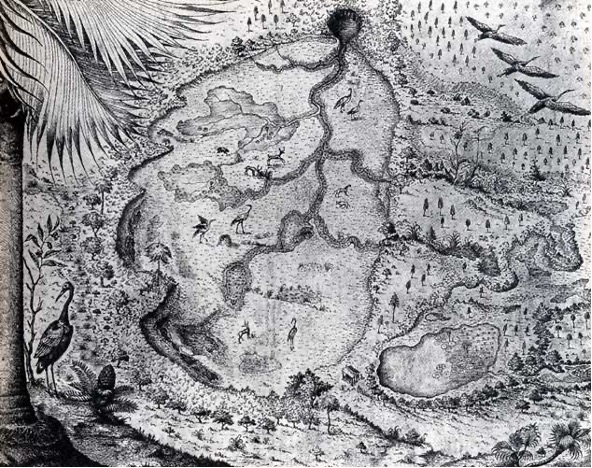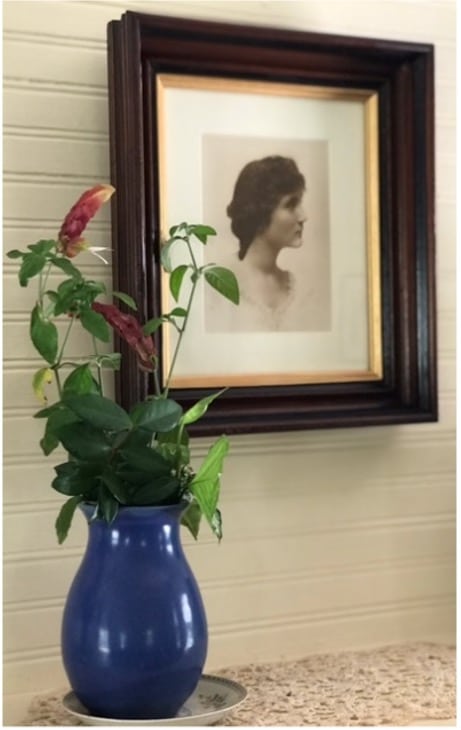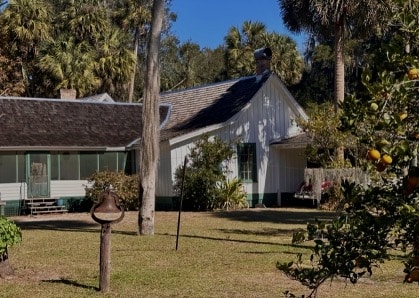Farmstead Cracker House
by Carole and Mike Adams (Photos by Carole Adams)
About 150 years after Billy Bartram explored and documented his findings in the East Florida Territory, another famous author and naturalist, Marjorie Kinnan Rawlings, lived and wrote about her experiences in the backcountry of North Central Florida. After vacationing in our state in the late 1920s, Rawlings purchased a 72-acre citrus grove and homestead. She separated from her husband and moved to the farm from Rochester, New York, seeking peace and solitude to focus on her writing. She was a tough, independent, and determined young woman. She lived and worked on the farmstead, in a circa-1890 dog-trot cracker house, a few miles from present-day Micanopy and what Billy called the “Great Alachua Savannah,” now known as Payne’s Prairie Preserve and State Park.

Over several decades, she wrote many stories about the natural resources and the people she encountered around Cross Creek. Cross Creek is a village where a natural, 1-mile-long waterway connects Locklossa and Orange Lakes in scenic Alachua County. Billy visited and documented the Seminole Indian village of Cuscowilla in the area in 1774. The chief of the village, Ahaya or Cow-keeper, was named Billy “Puc-puggy,” meaning “flower hunter” in their native language.
Rawlings referenced Bartram’s exploration and writings in several of her books. Perhaps the most renowned book, The Yearling, was published in 1938. Another one of her famous memoirs was Cross Creek, published in 1942.
In this book, she mentions a couple of specific food stories and recipes that stand out with references to Bartram’s food-related memories. One story involved the 1765 encounter with an Eastern diamondback rattlesnake at Fort Picolata, located on the Eastern shoreline of the St. Johns River. After this sudden, unexpected encounter, while walking with his father John, Billy reluctantly killed the sizable snake. It was later prepared for the officer’s supper by the soldiers at the fort.
Another recipe Rawlings describes is a “pilau,” where the cooks use duck, coot, or squirrel meat for a traditional Southern dish at church suppers. In 1774, Billy described a similar “pillo or pilloe” meal on St. Simons Island, in the Georgia colony, near Fort Frederica, where they boiled raccoon meat with rice. Rawlings wrote about the native Florida panther. She mentions Bartram’s writings, identifying the animal as a “tyger” in his book Travels, published in 1791. Rawlings goes on to say the Cross Creek old-timers called these large cats “painters” or “panter-cats.”

Today, Majorie Kinnan Rawlings’ 8-acre farmstead and citrus grove is a National Historic Landmark and a state park. It is part of a total 115-acre historical, conservation, and recreation property that includes forest, a picnic area, and the Orange Lake boat ramp.We highly encourage a visit to this unique and special literary destination to step back in time and experience a slice of old Florida.
Marjorie Kinnan Rawlings Historic State Park | Florida State Parks
